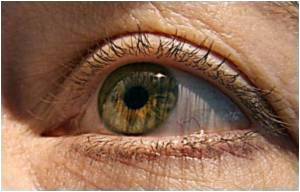Bottom Line: Risk factors for sagging eyelids include being a man, having lighter skin color and having a higher body mass index (BMI), other than aging.

Background: Sagging eyelids because of excess skin (dermatochalasis) is typically seen in middle-age or older adults. Typically a cosmetic concern, sagging eyelids also can cause visual field loss, irritation and headaches because patients force themselves to elevate their brow in order to see better.
How the Study Was Conducted: The study included two population-based groups: 5,578 unrelated participants of North European ancestry ("Dutch Europeans") (average age 67 years) and 2,186 twins (average age 53 years).
Results: Among the group of Dutch Europeans, 17.8 percent had moderate to severe sagging eyelids. Risk factors for sagging eyelids included age, being male, having lighter skin color and a higher BMI. Current smoking also may have some association. Among the twin pairs, heritability of sagging eyelids was estimated at about 61 percent.
Discussion: "Future genetic studies are needed to elucidate the mechanisms that explain the interplay between intrinsic and extrinsic factors in the development of skin sagging."
Source-Eurekalert









